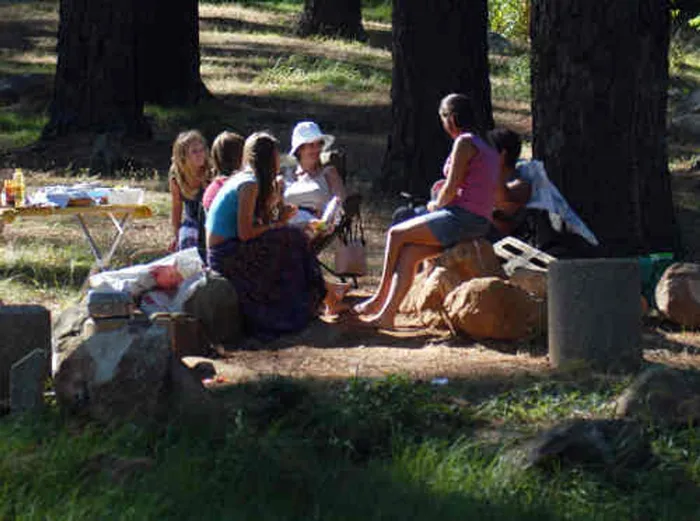Oasis of peace and beauty

The harbingers of winter are upon us, even if the season has yet to arrive in full force. Cold fronts, cloudy skies and plunging overnight temperatures are all warnings that summer is long gone and if we are not into winter proper, at least we are well into autumn.
It can be depressing I suppose, but then imagine living somewhere without such seasons. That must be boring. Many of us dislike change, but in nature it is almost always positive and I think of autumn as a time for celebration.
Among the showers there are always bright "Indian summer" days, with blue skies and light breezes, the land newly washed from the most recent downpour. There is a sense of cleanness in the earth, the rich scent of damp soil and the champagne of sparkling air. The mountains are clear, as though magnified by the purity of distance. And then there are the colours: the russets, tans, ochre and deep reds of nature in autumn are emotive, stirring a deep sense of change and a sense that all is as it should be.
Autumn is a time of slowing down after the frenetic heat and winds of the summer, and a walk in Newlands Forest was just the right way to embrace the season. The drive out through Constantia revealed hills and hedgerows ablaze with autumn shades. Cascades of russet and golden ivy flowed like waterfalls over fences, almost as though their final selfless act is to enhance the beauty of the environment one last time.
From the start of my walk the colours embraced me. The Pyrocanthus hedgerows next to the Newlands Forest offices were a spectacle of verdant leaves and impossibly bright red berries.
Walking beside the stream, the gentle lullaby of the water burbling through the rocks and tumbling over small waterfalls was music to the ears. With the winter rains the stream would be in foaming turmoil, but for now it was gently bubbling, in deep shade among colourful lichens and green moss, gloriously peaceful and a respite from the noise and haste of the city.
I love the forest. It offers peace and protection from much that ails us, the wind never quite penetrates the deeper reaches. Noise is filtered so that the sound of the traffic on the nearby freeway is lost, while even at the height of summer the bright sun and baking heat are toned down.
Walking here is a sensual experience, the rustling leaves underfoot both create sound and absorb it. The paths lead over the gnarled and scarred roots of hundreds of trees, callused from a thousand footfalls, arthritic fingers grasping the soil and stabilising it. The sense of symbiosis is so attractive here, no one plant or animal has greater value than the next. The trees provide shade, nesting materials to the birds and protective niches for the animals.
In turn the occupants of the forest distribute seeds, pollinate the plants and fertilise the soil. The place is one giant collective, where the good of the individual never trumps the good of the whole, and I frequently find myself wondering if we couldn't all learn a thing or two by taking a little more notice.
Even the bright autumn berries which will propagate the next generation of bushes are in part sacrificed in exchange for the co-operation of the animals and birds to help distribute them. The forest is the direct antithesis of the rush and self-serving nature of the city, ever in balance.
With such thoughts in my head I wandered from path to path, the late season sunshine, bronzed by its low angle, setting the dead leaves ablaze with magic light. An owl swept silently by and I listened to the continuous excited chatter of birds feasting on the berries.
To live in a city with such oases is a blessing, one I frequently feel we don't sufficiently appreciate: nature is right here on our doorstep, and we really should pay it more heed.
There is peace and quiet and healing just off the freeway if one only takes the trouble to drop in and open one's eyes to the splendour.